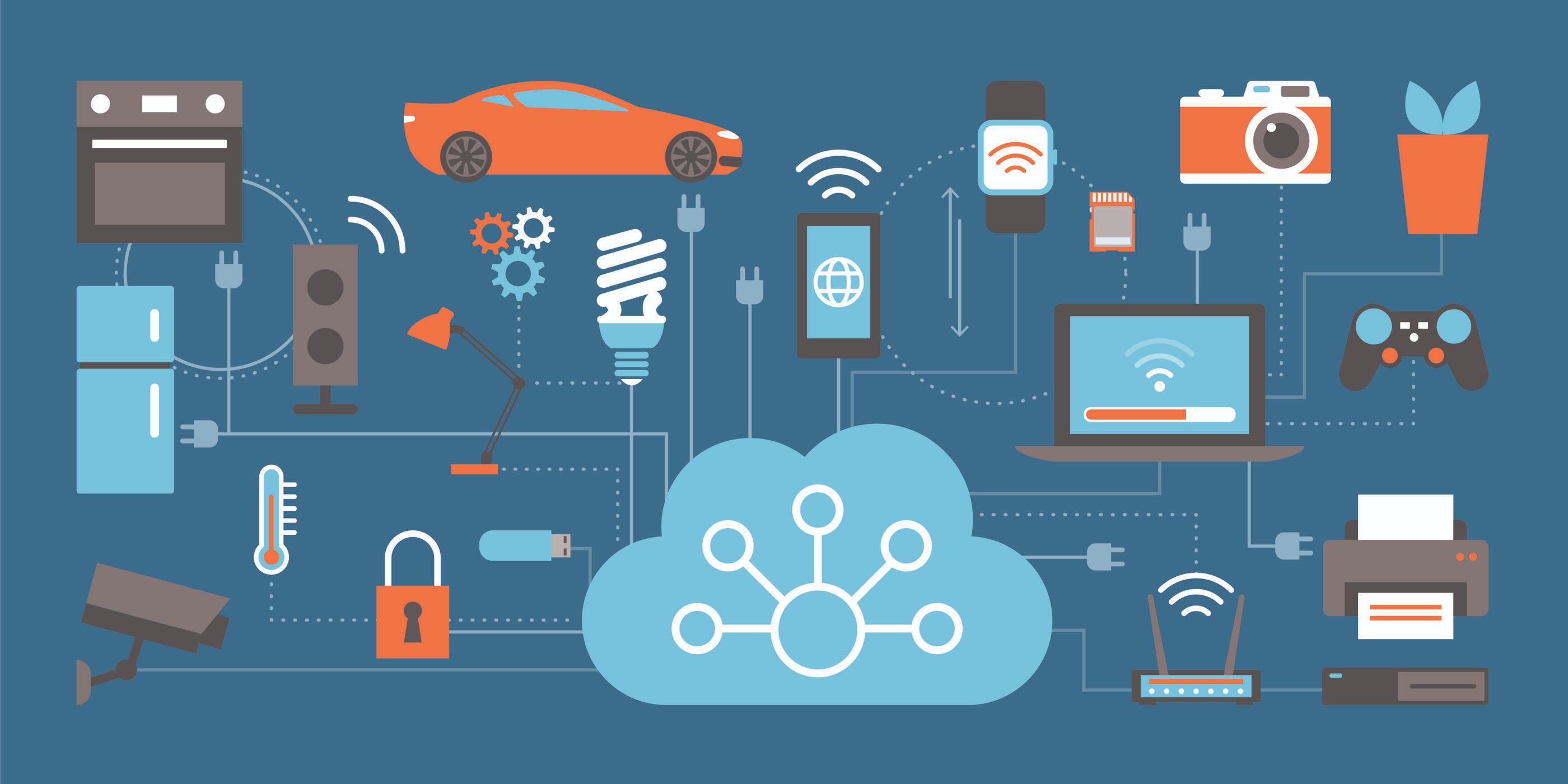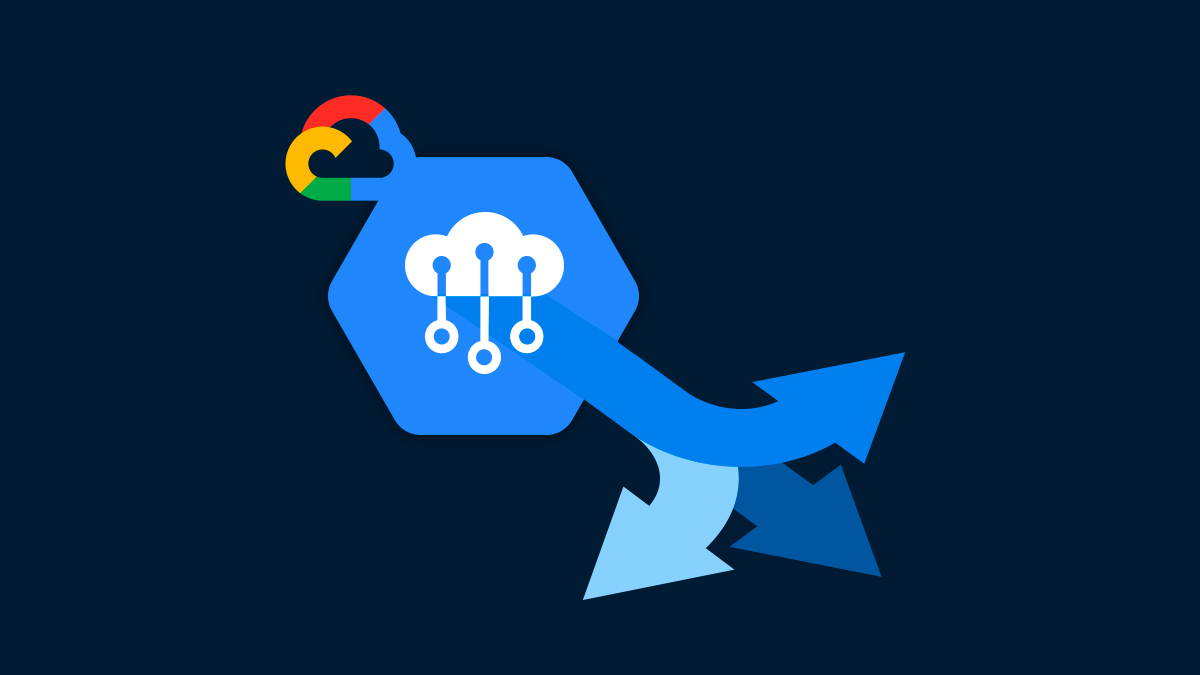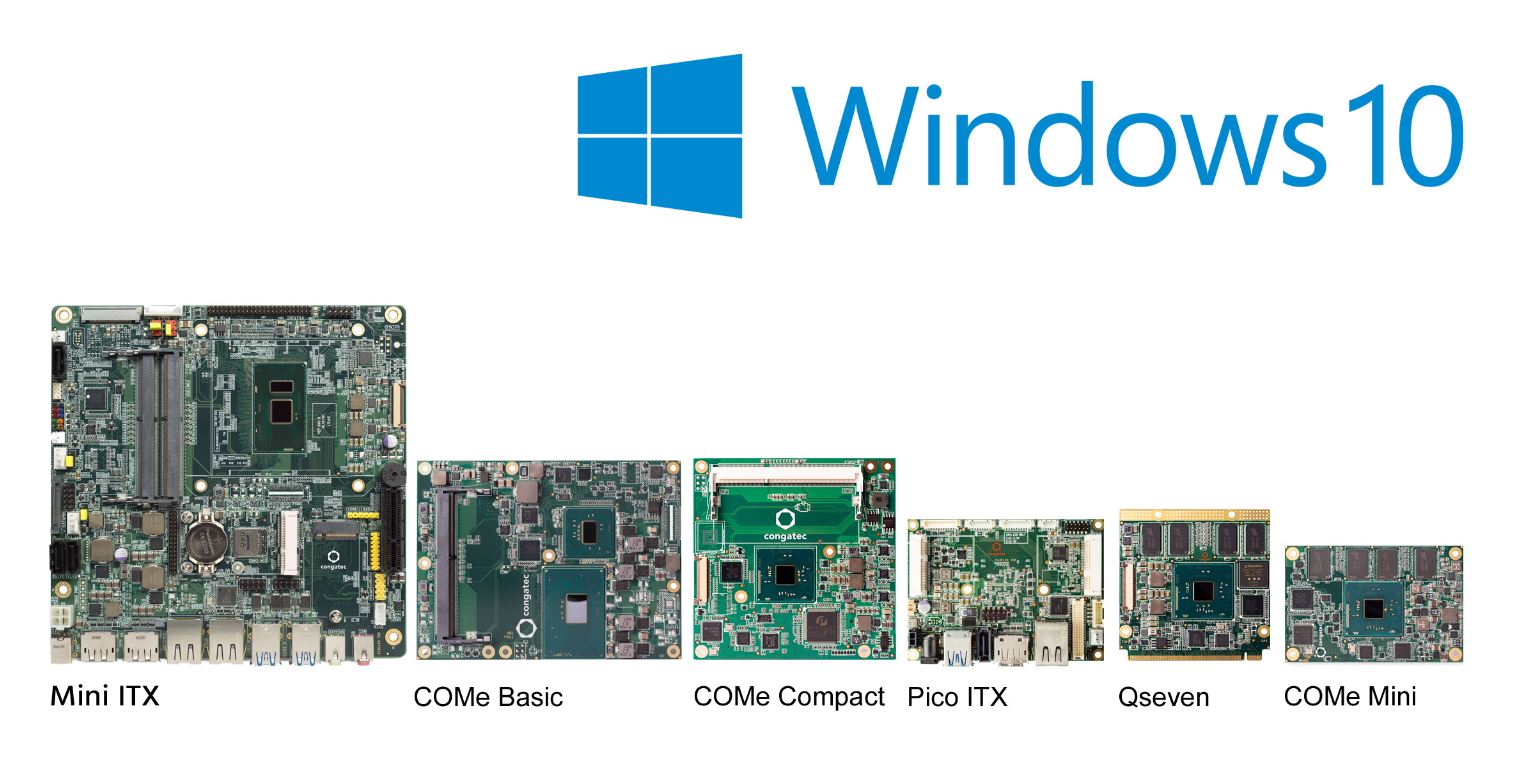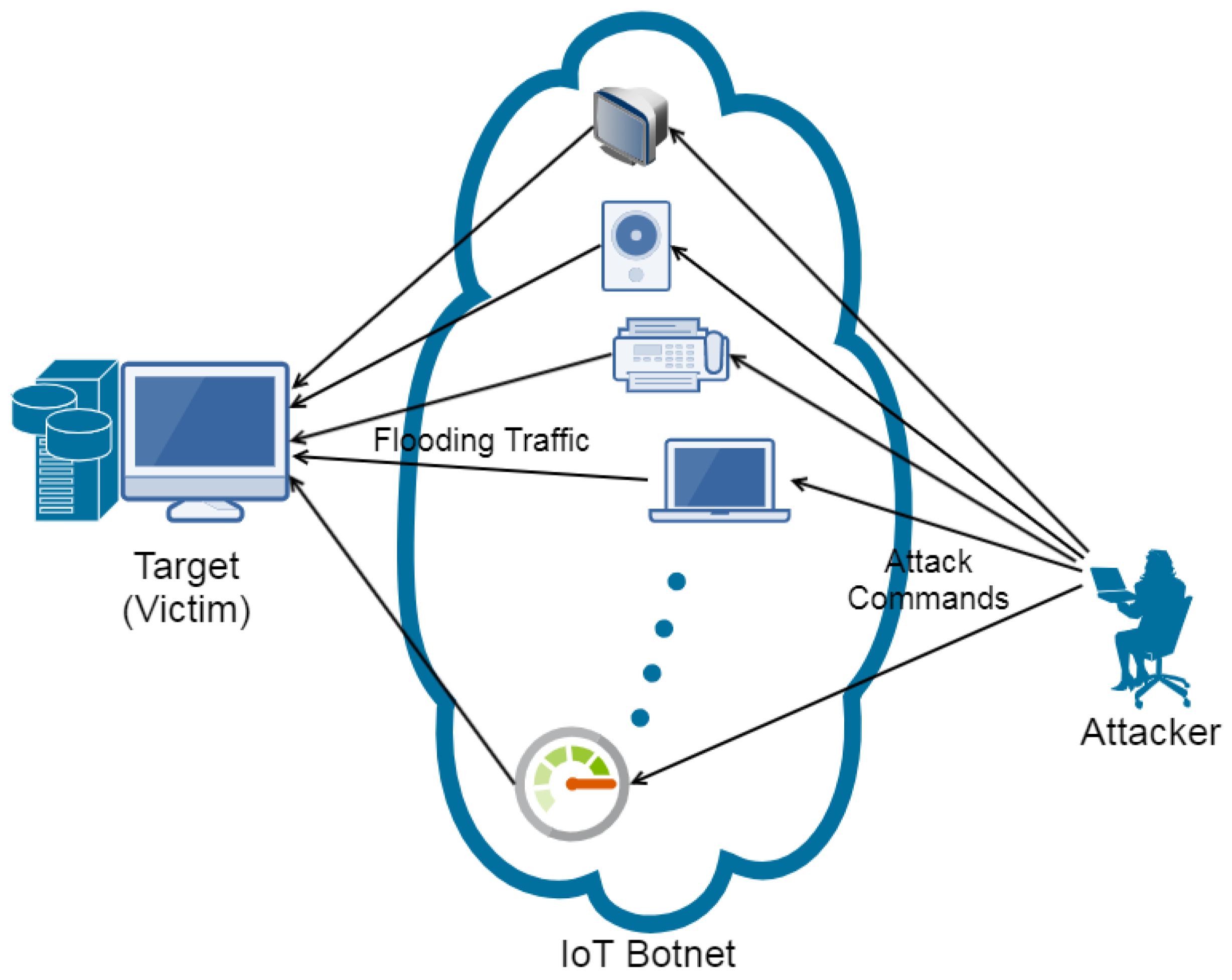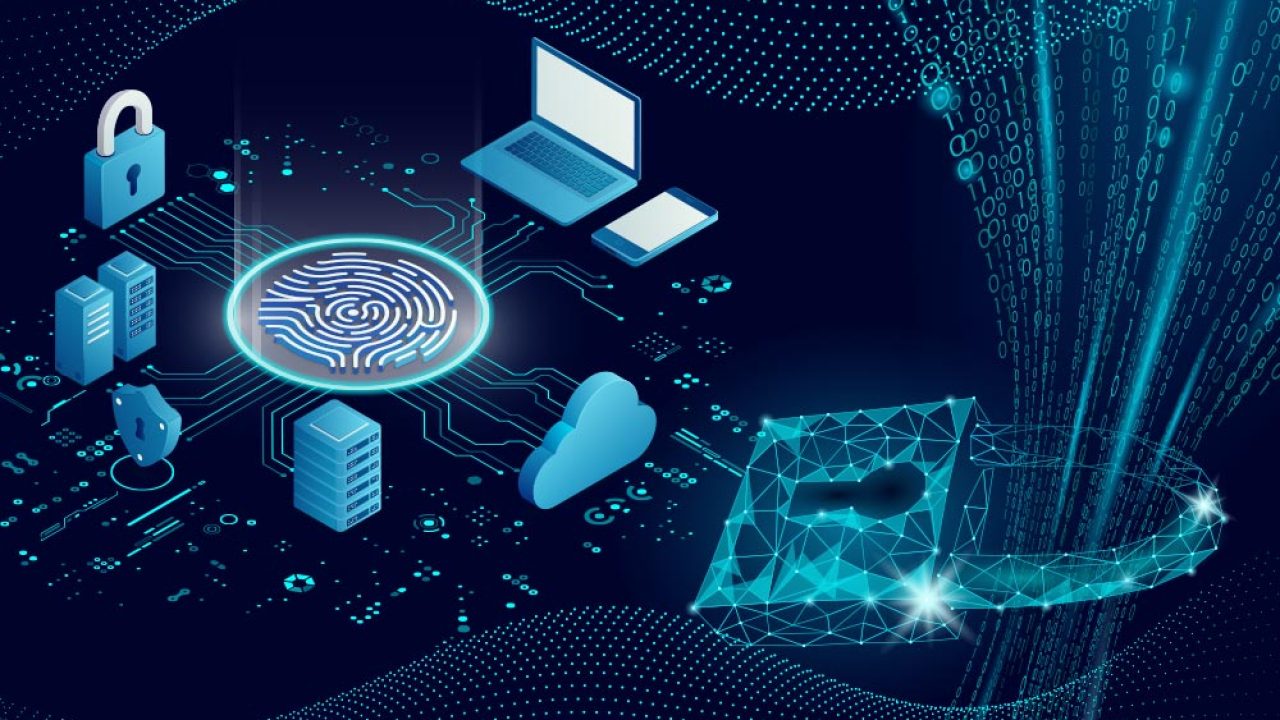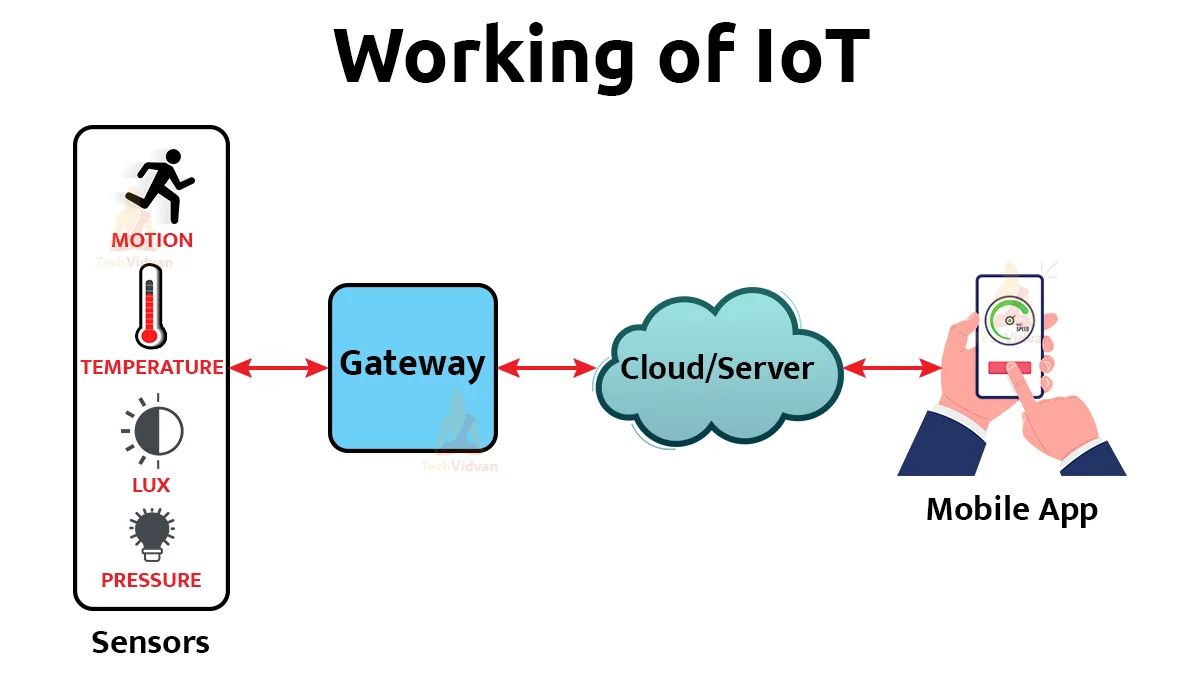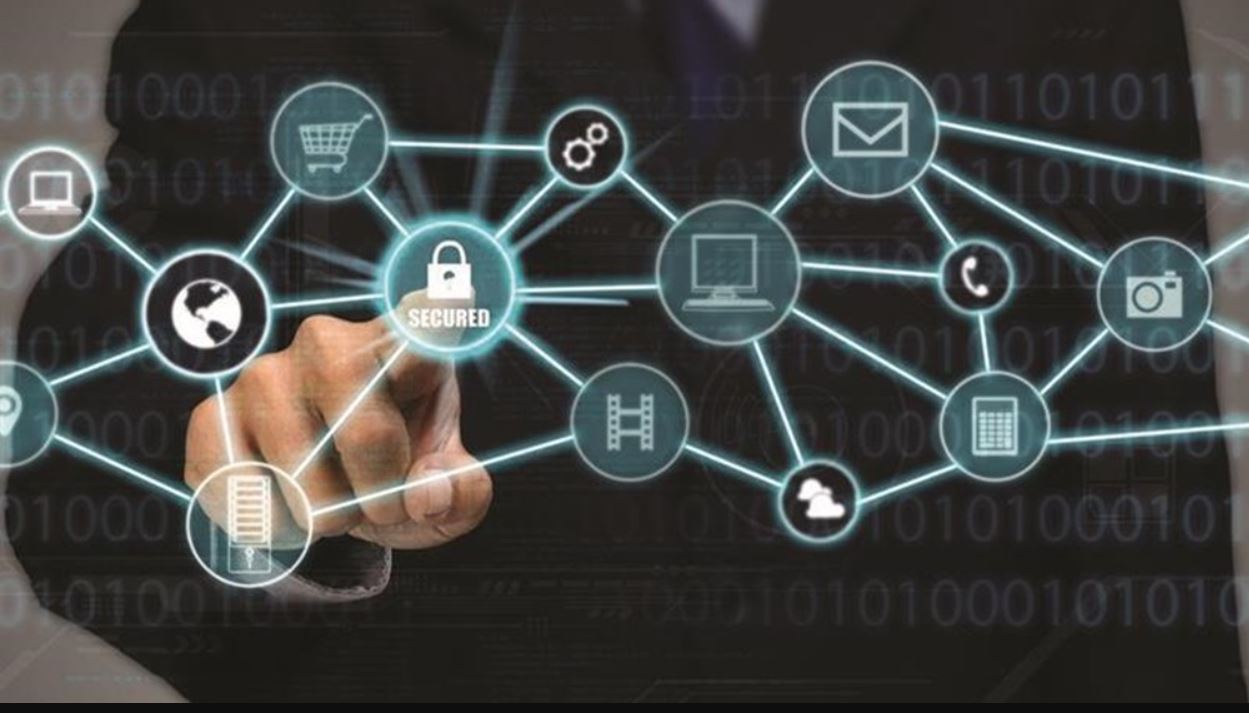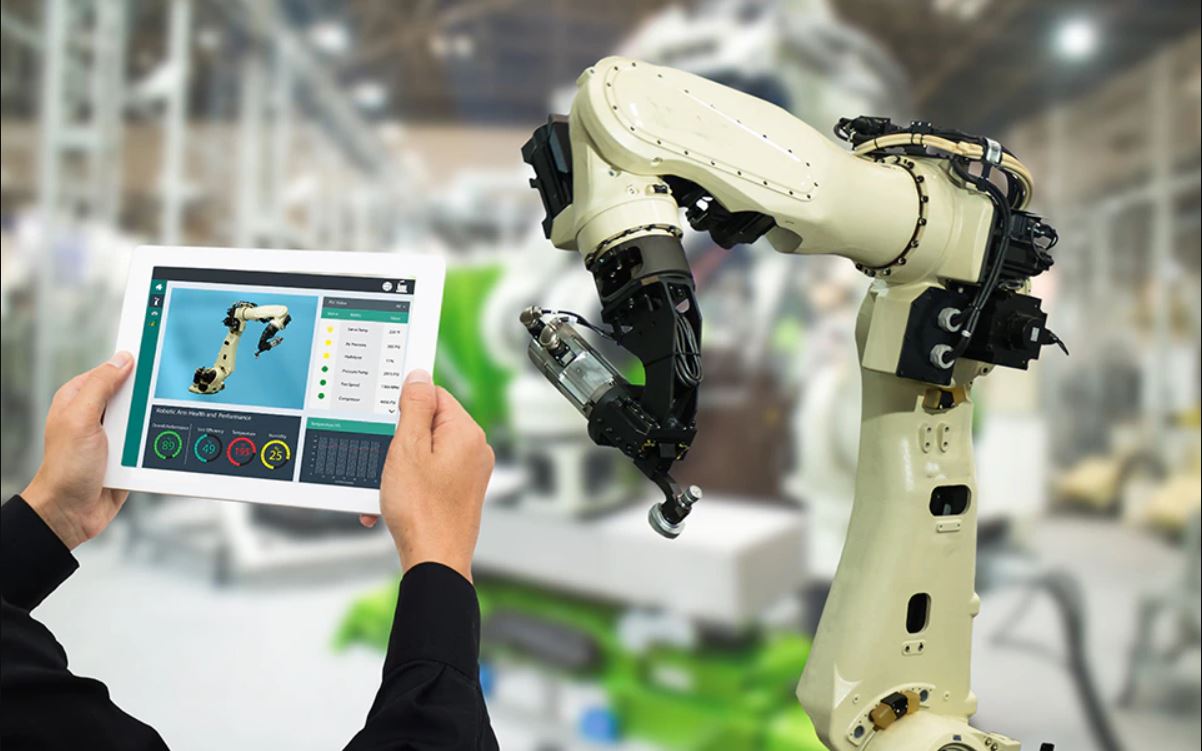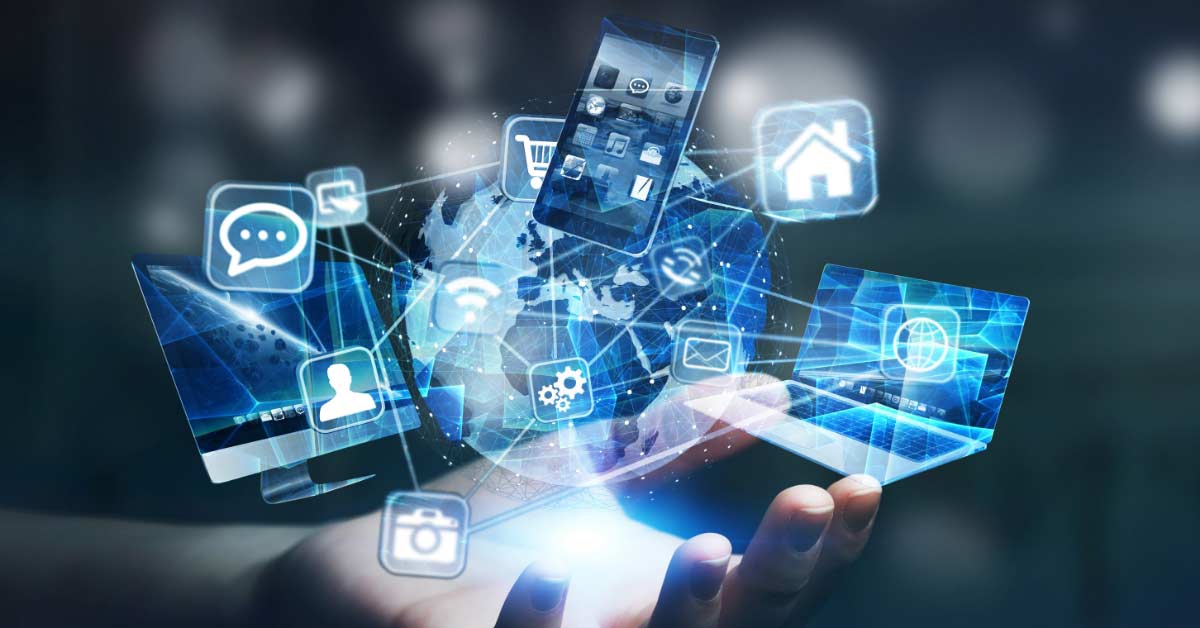Introduction
Welcome to the era of IoT devices—the groundbreaking technology that is transforming the way we live, work, and interact with the world around us. IoT, or the Internet of Things, refers to the network of interconnected devices that communicate and exchange data with one another via the internet. These devices, equipped with sensors and actuators, have the ability to collect and share information, making our environments smarter and more efficient.
The proliferation of IoT devices has given rise to an interconnected ecosystem wherein everyday objects, from household appliances to industrial machinery, are capable of receiving and transmitting data. This data can then be analyzed and utilized to optimize processes, improve decision-making, and enhance our overall quality of life.
IoT devices have become an integral part of various industries, including healthcare, agriculture, transportation, and manufacturing. They enable us to monitor vital signs remotely, automate farming operations, track shipments in real-time, and streamline production processes. The potential applications of IoT devices are virtually limitless.
As the number of IoT devices continues to grow exponentially, it is important to understand how they work, the benefits they offer, the challenges they present, and the security risks they pose. This article will delve into these key aspects, providing you with a comprehensive overview of the exciting world of IoT devices.
Definition of IoT Devices
IoT devices, also known as connected devices, are physical objects embedded with sensors, software, and connectivity capabilities that enable them to collect and exchange data with other devices and systems via the internet. These devices can include anything from smartphones and smart home appliances to industrial machinery and wearable devices.
What sets IoT devices apart from traditional devices is their ability to seamlessly communicate and collaborate with each other, forming a network of interconnected devices. This network creates an intelligent ecosystem where devices can autonomously share information and perform tasks without human intervention.
The fundamental concept behind IoT devices is to enable the exchange of data and information between the physical and digital worlds. By connecting devices to the internet, they can be remotely controlled, monitored, and managed, enhancing efficiency and enabling new applications and services.
IoT devices can vary in size, complexity, and functionality. Some devices, like temperature sensors or smart thermostats, have a single purpose and provide specific data. Others, like smartphones or home automation systems, are multifunctional, capable of performing a wide range of tasks and collecting various types of data.
IoT devices can be classified into two main categories: consumer IoT devices and industrial IoT devices. Consumer IoT devices are designed for personal use and include devices such as fitness trackers, smart speakers, and smart home security systems. Industrial IoT devices, on the other hand, are used in industrial settings and are designed to improve efficiency, productivity, and safety. Examples of industrial IoT devices include remote monitoring systems, asset tracking devices, and connected machinery.
In summary, IoT devices are physical objects enhanced with connectivity and intelligence, enabling them to communicate, exchange data, and interact with other devices and systems. Their ability to bridge the gap between the physical and digital worlds opens up a world of possibilities for automation, efficiency, and innovation.
How IoT Devices Work
IoT devices operate on a simple yet powerful principle known as the “sensor-to-cloud” architecture. This architecture consists of three main components: the sensors, the connectivity layer, and the cloud infrastructure.
The sensors embedded in IoT devices are responsible for collecting data from the physical world. These sensors can vary depending on the device’s purpose and can include temperature sensors, motion sensors, light sensors, and many more. The collected data is then processed and converted into a digital format that can be transmitted and analyzed.
The connectivity layer is what enables IoT devices to communicate with each other and with the cloud. This layer can utilize various communication technologies, such as Wi-Fi, Bluetooth, cellular networks, or even specialized IoT protocols like Zigbee or LoRaWAN. These technologies ensure that the data collected by IoT devices can be transmitted reliably and securely over the internet.
Once the data is transmitted, it is received and stored in the cloud infrastructure. The cloud infrastructure serves as the central hub where all the data from different IoT devices is collected, stored, and processed. This allows for scalable data storage and advanced analytics capabilities, making it possible to extract valuable insights from the vast amount of data generated by IoT devices.
IoT devices also rely on software applications and platforms to enable seamless communication and data management. These applications, often referred to as IoT platforms, provide the necessary tools and services to develop, deploy, and manage IoT solutions. They handle tasks such as device provisioning, data processing, security, and integration with other systems.
One of the key advantages of IoT devices is their ability to automate actions based on the data they collect. This is achieved through the use of rules and algorithms that define how the devices should respond to specific conditions or events. For example, a smart thermostat can automatically adjust the temperature based on the occupancy status of a room or the outside weather conditions.
In summary, IoT devices work by gathering data from the physical world through sensors, transmitting that data via the connectivity layer, and storing and processing it in the cloud infrastructure. This allows for real-time monitoring, analysis, and automation, enabling a wide range of applications and services.
Examples of IoT Devices
IoT devices have permeated almost every aspect of our lives, revolutionizing the way we interact with our surroundings. Here are some examples of common IoT devices that are widely used today:
- Smart Home Devices: These devices enhance the convenience and efficiency of our homes. Examples include smart thermostats, smart lighting systems, smart locks, and voice-controlled virtual assistants like Amazon Echo or Google Home.
- Wearable Devices: Fitness trackers, smartwatches, and health monitoring devices fall under this category. They collect data related to our physical activities, sleep patterns, heart rate, and more, providing valuable insights for personal health and fitness management.
- Connected Vehicles: IoT is revolutionizing the automotive industry with connected cars. Cars equipped with IoT technology can gather real-time data on performance, fuel consumption, and maintenance needs. They can also provide navigation, entertainment, and safety features.
- Industrial IoT Devices: In industries such as manufacturing, logistics, and agriculture, IoT devices play a crucial role. Examples include asset tracking systems, remote monitoring devices, drones for crop analysis, and automated production lines that optimize efficiency and productivity.
- Smart Health Devices: IoT devices have transformed healthcare, enabling remote patient monitoring, telemedicine, and personalized healthcare management. Examples include wearable health monitors, smart pill dispensers, and connected medical devices for monitoring vital signs.
- Smart Cities Solutions: IoT technology is helping to create more sustainable and efficient cities. Smart streetlights, waste management systems, parking sensors, and traffic management systems are all examples of IoT devices used in smart city initiatives.
These examples only scratch the surface of the vast range of IoT devices available today. From consumer gadgets to industrial solutions, IoT devices continue to shape our daily lives, making them more convenient, efficient, and connected.
Benefits of IoT Devices
The widespread adoption of IoT devices is driven by the numerous benefits they offer. Here are some key advantages of incorporating IoT devices into various aspects of our lives:
- Improved Efficiency: IoT devices enable automation and optimization of processes, leading to improved efficiency and productivity. From smart homes that adjust energy usage based on occupancy to manufacturing facilities that streamline production through real-time data analytics, IoT devices help minimize waste, reduce downtime, and enhance overall operational efficiency.
- Enhanced Convenience: IoT devices bring convenience to our daily lives. Smart home devices allow us to control appliances remotely, set schedules, and receive notifications. Wearable devices track our fitness goals and health metrics, providing real-time insights and customized recommendations. These devices make our lives easier and more convenient by automating tasks and providing personalized experiences.
- Cost Savings: IoT devices can help reduce costs by optimizing resource utilization and improving maintenance efficiencies. For example, smart energy management systems in buildings can monitor usage patterns and adjust energy consumption accordingly, resulting in significant cost savings. Similarly, predictive maintenance enabled by IoT devices helps detect potential equipment failures, allowing for proactive repairs and minimizing costly downtime.
- Improved Decision Making: IoT devices generate vast amounts of data that can be used for data-driven decision making. Real-time analytics and insights derived from IoT data help businesses and individuals make informed decisions. This can range from optimizing supply chain logistics based on real-time tracking data to adjusting crop irrigation schedules based on environmental sensor data.
- Enhanced Safety and Security: IoT devices have the potential to improve safety and security in various settings. Smart home security systems, for example, offer surveillance and remote monitoring capabilities, providing homeowners with peace of mind. In industrial settings, IoT devices can be used to monitor critical infrastructure, detect safety hazards, and promptly respond to emergencies.
- Improved Quality of Life: IoT devices have the potential to significantly improve our quality of life by providing personalized and connected experiences. From healthcare innovations like remote patient monitoring to smart city initiatives that enhance urban living, IoT devices create a more connected and efficient world, enhancing our overall well-being and satisfaction.
These are just a few examples of the many benefits that IoT devices bring to our lives. As technology advances, the potential for IoT devices to transform industries and improve our everyday experiences continues to expand, promising a brighter and more connected future.
Challenges of IoT Devices
While IoT devices offer immense benefits, there are also several challenges that need to be addressed to ensure their successful integration and widespread adoption. Here are some of the key challenges associated with IoT devices:
- Security and Privacy: IoT devices collect and transmit sensitive data, making them potential targets for cyberattacks. Weak security measures and vulnerabilities in IoT devices can lead to data breaches and privacy infringements. Device manufacturers and users must prioritize security measures such as encryption, authentication protocols, and regular software updates to mitigate these risks.
- Interoperability: IoT devices come from various manufacturers and operate on different platforms, protocols, and standards. The lack of interoperability between devices poses a challenge for seamless integration and communication. Efforts are being made to establish common standards and protocols to enable better interoperability and compatibility between different IoT devices.
- Scalability: The sheer number of IoT devices connected to the internet is growing rapidly. This scalability challenge presents difficulties in managing and processing the enormous streams of data generated by these devices. Robust infrastructure and advanced data management techniques are required to handle the sheer volume and velocity of IoT data.
- Data Management: IoT devices generate massive amounts of data, often in real-time. Managing, storing, processing, and analyzing this data poses significant challenges. Effective data management strategies, including data compression, intelligent filtering, and efficient storage solutions, are crucial for harnessing the value of IoT-generated data.
- Power and Energy Efficiency: Many IoT devices operate on limited power sources, such as batteries. Ensuring the longevity of these devices and optimizing their energy consumption is crucial. Balancing the need for continuous connectivity and functionality with power efficiency is a challenge that requires innovative solutions and advancements in energy-saving technologies.
- Ethical and Legal Considerations: IoT devices raise ethical and legal questions regarding data ownership, consent, and privacy. They also highlight issues related to data sharing, data retention, and potential biases in data-driven decisions. Regulations and frameworks need to be established and enforced to protect individuals’ rights and ensure responsible use of IoT-generated data.
Addressing these challenges requires collaboration and proactive measures from device manufacturers, technology leaders, policymakers, and users. The continued evolution of IoT devices will depend on overcoming these hurdles and developing solutions that prioritize security, interoperability, scalability, efficient data management, and ethical considerations.
Security Risks of IoT Devices
While IoT devices offer numerous benefits, their widespread adoption also brings about significant security risks. The interconnected nature and vast amounts of sensitive data collected and transmitted by IoT devices make them attractive targets for cybercriminals. Here are some of the key security risks associated with IoT devices:
- Weak Authentication: Many IoT devices lack robust authentication mechanisms, making them vulnerable to unauthorized access. Default passwords, lack of two-factor authentication, and weak encryption methods create opportunities for hackers to gain control of these devices and access the sensitive data they collect.
- Device Vulnerabilities: IoT devices often have limited computing power and memory, making it challenging to implement strong security measures. This can lead to vulnerabilities in the firmware, operating systems, or communication protocols of these devices. Hackers can exploit these vulnerabilities to gain unauthorized access or remotely control the devices.
- Data Privacy: IoT devices collect and transmit vast amounts of personal and sensitive data. If not adequately protected, this data can be intercepted or leaked, compromising individuals’ privacy and leading to identity theft or unauthorized monitoring. The unauthorized access to this data can also have implications for personal and national security.
- Botnets and DDoS Attacks: Compromised IoT devices can be used in botnets, where attackers hijack multiple devices to launch large-scale Distributed Denial of Service (DDoS) attacks. These attacks overwhelm targeted websites or networks, causing disruption and potentially leading to financial losses.
- Lack of Patching and Updates: IoT devices often have long lifecycles, and manufacturers may not provide regular security patches and updates. This leaves devices susceptible to known vulnerabilities over time, making them attractive targets for hackers who can exploit these known weaknesses.
- Supply Chain Risks: The complex supply chain involved in manufacturing IoT devices can introduce security risks. Malicious actors can compromise the software or hardware during the development, production, or distribution process, leading to backdoors or other vulnerabilities in the devices.
To mitigate these security risks, various stakeholders must collaborate to establish best practices and standards. Manufacturers need to prioritize security-by-design principles, implementing robust authentication, encryption, and secure coding practices. Users must also take responsibility by regularly updating firmware, changing default passwords, and securing their home networks.
The development of regulatory frameworks and industry standards can ensure that security requirements are met during the manufacturing and deployment of IoT devices. Ongoing research and development in areas such as secure communication protocols, encryption algorithms, and intrusion detection systems are essential to stay ahead of evolving security threats.
Addressing the security risks associated with IoT devices requires a comprehensive and multi-faceted approach. By implementing robust security measures and fostering a culture of security awareness, we can maximize the benefits of IoT devices while minimizing the potential risks they pose.
Future of IoT Devices
The future of IoT devices holds immense promise and potential. As technology continues to advance and connectivity becomes more pervasive, we can expect to see several exciting developments in the realm of IoT devices. Here are some key trends and possibilities for the future:
- Increased Adoption: The adoption of IoT devices is expected to skyrocket in the coming years. As the costs of sensors, connectivity, and data storage continue to decrease, IoT devices will become more accessible to individuals and organizations. This widespread adoption will drive innovation and create new opportunities for both established companies and startups.
- Edge Computing: Edge computing, where data processing and analytics occur closer to the source of data generation, will become more prevalent. This approach reduces latency and bandwidth requirements by processing data locally on IoT devices or in nearby edge servers. Edge computing will enable faster response times, improved data privacy, and enhanced real-time decision-making capabilities.
- Artificial Intelligence and Machine Learning Integration: IoT devices will increasingly incorporate artificial intelligence (AI) and machine learning (ML) capabilities. AI and ML technologies will enable autonomous decision-making, advanced anomaly detection, and predictive maintenance. This integration will result in more intelligent and adaptive IoT devices, providing personalized and efficient experiences.
- 5G and Connectivity: The advent of 5G networks will revolutionize the IoT landscape. With its low-latency, high-speed connectivity, 5G will unlock new possibilities for real-time applications, such as autonomous vehicles, remote surgery, and smart city infrastructure. This enhanced connectivity will enable more seamless integration and communication among IoT devices.
- Emergence of Blockchain: Blockchain technology will play a crucial role in enhancing the security, trust, and privacy of IoT devices. By providing a decentralized and tamper-resistant ledger, blockchain can secure IoT device communications, prevent unauthorized tampering of data, and enable secure peer-to-peer transactions.
- Integration of IoT with Augmented Reality (AR) and Virtual Reality (VR): The integration of IoT devices with AR and VR technologies will create immersive and interactive experiences. IoT devices can provide real-time data and context to AR and VR applications, enhancing gaming, training simulations, and remote collaboration.
- Sustainability and Environmental Impact: IoT devices will continue to contribute to sustainability and energy efficiency efforts. By optimizing resource utilization, enabling smart energy management, and facilitating environmental monitoring, IoT devices will play a crucial role in creating a more sustainable future.
The future of IoT devices promises to be exciting and transformative, impacting various industries and reshaping our daily lives. However, alongside the opportunities, challenges such as data privacy, security, and interoperability must be addressed. Through collaboration, innovation, and responsible adoption, we can harness the full potential of IoT devices and create a connected and intelligent world.
Conclusion
IoT devices have revolutionized the way we live, work, and interact with the world around us. These interconnected devices have the power to make our lives more convenient, efficient, and connected. From smart homes and wearable devices to industrial IoT solutions, the possibilities are endless.
Although IoT devices offer numerous benefits, there are also challenges that need to be addressed. Security risks, interoperability issues, scalability concerns, and data management complexities require careful attention to ensure the successful integration and widespread adoption of IoT devices.
Looking to the future, the potential of IoT devices is immense. Advancements in technology such as edge computing, AI and ML integration, 5G connectivity, and blockchain will unlock new possibilities and enhance the capabilities of IoT devices. The integration of IoT with AR and VR technologies will create immersive experiences, and sustainability efforts will be further supported by IoT devices.
It is crucial for manufacturers, policymakers, researchers, and users to work together to address the challenges and maximize the benefits of IoT devices. Prioritizing security measures, establishing industry standards, and creating regulatory frameworks will ensure the responsible use and secure integration of IoT devices into our lives.
The journey of IoT devices is ongoing, and the future holds endless opportunities for innovation and transformation. As technology continues to advance, the potential of IoT devices to drive efficiency, enable automation, and improve our quality of life is only set to grow.
So, let us embrace and harness the power of IoT devices to create a connected and intelligent world that enhances our lives, drives economic growth, and fosters sustainability.







